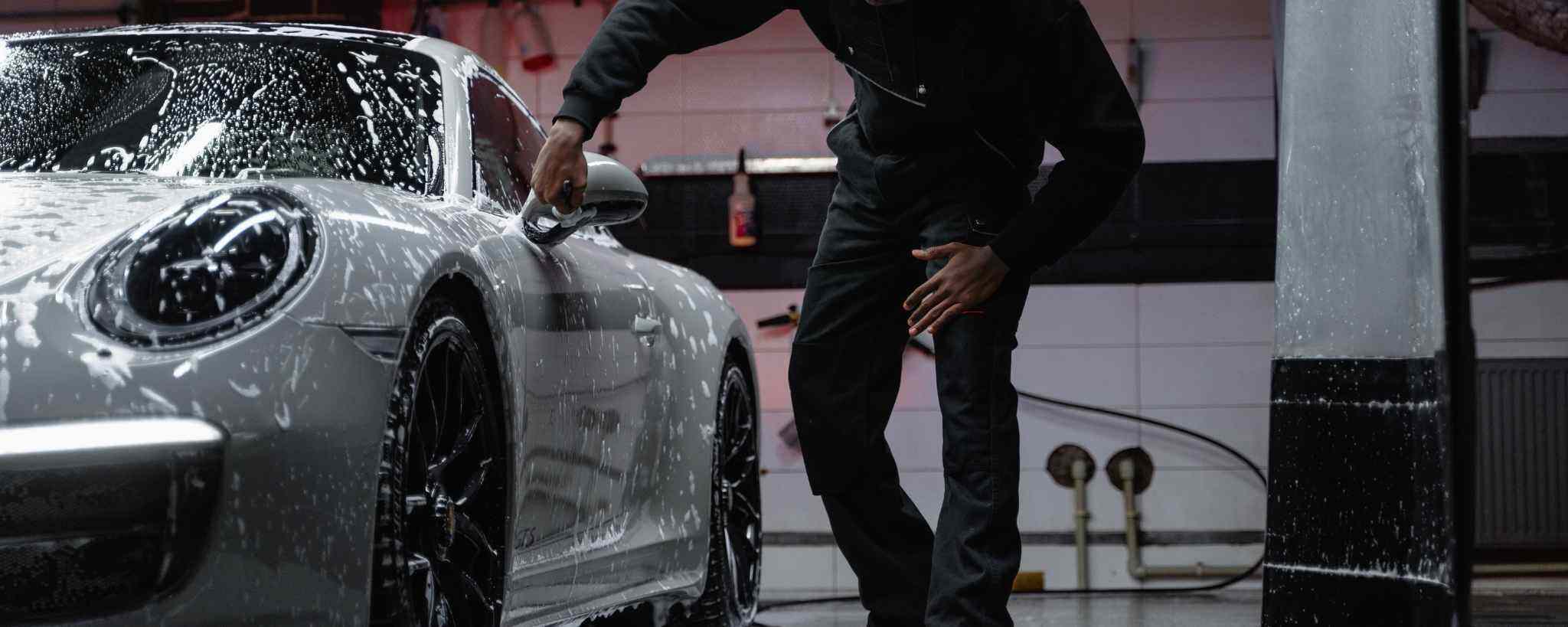Pre-Spring Car Detailing Checklist
Ready for the sunny days ahead after the harsh winter? Here's a complete pre-spring car detailing checklist to make your car cleaning process much easier!

Written by:
Parham Koukia
Reviewed By:
Editorial Team
Published: March 01, 2025
Updated: October 09, 2025
Use AI to summarize this article:
As we are all set to wave farewell to this year’s winter after facing multiple snowstorms, the damage made to our cars is hard to ignore. Road salt has settled into every crevice, moisture has seeped into carpets, and the freezing temperatures have left surfaces brittle.
With spring around the corner, now is the time to shake off winter’s damage and get your car back to its true self. While we have a guide for you to clean your car post-winter, nothing compares to the level of care and protection that professional detailing services provide.
From removing stubborn salt buildup to restoring your car’s finish and interior comfort, a thorough detailing session ensures your car is not only looking its best but also well-prepared to handle the road ahead in the spring and summer months.
Essential Supplies for Detailing
Before you begin the detailing process here’s what you should have in your hands:
- Microfiber towels: To prevent scratches and leave a streak-free finish to your car exterior.
- Two buckets: One bucket for clean water and another for rinsing dirt to minimize swirl marks on your paint.
- pH-balanced car shampoo: Formulated to remove dirt without stripping away protective coatings.
- Clay bar kit: Removes embedded contaminants such as road tar, tree sap, and industrial fallout from the paint.
- Paint sealant or ceramic coating: Provides long-term protection against environmental pollutants and UV rays.
- Glass cleaner with hydrophobic properties: Enhances visibility and repels water to improve safety in wet conditions.
- Vacuum cleaner with brush attachments: Essential for removing dust, crumbs, and debris from carpets and upholstery.
- Leather conditioner or fabric protectant: Maintains the integrity of interior surfaces, preventing cracks and discoloration.
- Wheel cleaner and tire dressing: Restores the shine of wheels and adds a protective layer against brake dust and road grime.
- Trim restorer: For faded plastic and rubber trims, preventing sun damage and brittleness.
Step By Step Detailing Process to Prepare Your Car For Spring
The winter season leaves behind corrosive salt, grime, and road chemicals that can damage both your paint and undercarriage. Here’s how to clean the exterior of your car after a harsh winter:
Exterior Deep Cleaning and Protection
Thorough Wash to Remove Winter Residues
- Start with a pre-rinse using a pressure washer or hose to loosen debris.
- Use the two-bucket car wash method (one bucket with clean soapy water and another with rinse water) to prevent dirt from being reintroduced to your car’s surface.
- Pay extra attention to hidden areas, such as wheel wells, the underside of your car, and door jambs where grime tends to accumulate.
- Avoid high-pressure washes directly on paint chips or weak spots, as water pressure can worsen existing imperfections.
Decontaminate Paint with Clay Bar Treatment
Even after washing, microscopic contaminants can remain embedded in your paint, affecting its smoothness and shine.
- Spray lubricant generously onto the paint before using the clay bar to prevent scratches.
- Work in small sections, gently gliding the clay bar over the surface until it feels smooth.
Check our detailed guide on How to Clay Bar a Car
Apply Paint Protection: Wax, Sealant, or Ceramic Coating
Spring weather means increased sun exposure and rainfall, so you need to make some extra effort to protect the exterior of your car.
- Apply wax for a temporary glossy finish. Make sure you wax your car after every car wash as the car wash rinse the wax from the surface.
- Opt for paint sealant for extended durability of 6-12 months.
- Consider a ceramic coating for long-lasting protection(1-2 years), making your car easier to clean while adding an ultra-hydrophobic effect.
Interior Cleaning
Deep Clean Carpets and Upholstery
Winter moisture, salt stains, and accumulated dust can degrade your interior surfaces.
- Remove floor mats and vacuum them separately before treating any stains.
- Use a steam cleaner or upholstery cleaner to lift embedded dirt from fabric seats and carpets.
- Apply fabric protectant to minimize future stains and wear.
Here’s how to vacuum a car like a professional detailer.
Restore and Protect Leather or Vinyl Surfaces
Your car’s seats, dashboard, and door panels are susceptible to cracking and fading due to UV exposure.
- Use a pH-balanced leather cleaner to safely remove dirt without damaging the material.
- Apply conditioner to maintain suppleness and prevent premature aging of the leather.
Sanitize High-Touch Surfaces
Germs and bacteria accumulate on commonly touched areas inside the car because of the enclosed spaces and cold-season illness. So it's extremely important to keep your car hygienic for the safety of you as well as your passengers.
- Disinfect the steering wheel, gear shifter, buttons, and handles using an interior-safe cleaner.
- Wipe with a clean microfiber towel to prevent streaks and residue buildup.
Cleaning Glass for High Visibility
Streak-Free Glass Cleaning
- Use an ammonia-free cleaner, especially on tinted windows.
- Clean both interior and exterior glass surfaces for maximum clarity.
- Apply a hydrophobic treatment to repel water and improve visibility in rainy conditions.
Windshield Wiper Blade Replacement
Worn-out wiper blades can cause streaks and reduced visibility.
- Inspect for cracks or stiffness and replace them if necessary.
- Change wiper blades every 6-12 months to ensure optimal performance.
Cleaning Tire and Wheels
Wheels take the most impact from winter roads, collecting salt, grit, and corrosive substances. Here’s a quick tip on getting your wheels and tires ready for the spring:
- Use an acid-free wheel cleaner to dissolve buildup without damaging wheel coatings.
- Scrub with a soft-bristle brush to remove particles embedded in tire treads and wheel spokes.
- Apply a non-silicone-based tire dressing to restore elasticity and protect against UV exposure.
- Check tire pressure, as winter deflation can lead to reduced fuel efficiency and handling issues.

Parham Koukia
Lead Car Detailer / Operations Manager
With nearly 15 years of hands-on detailing experience, Parham has become a trusted authority in the auto care world. His work is regularly spotlighted in leading outlets like CNN, GoBankingRates, and Family Handyman. Parham likes to share his knowledge to offer in-depth tips on equipment selections, seasonal car care, and some secret car cleaning tips used by detailers in the real world!
Read more
